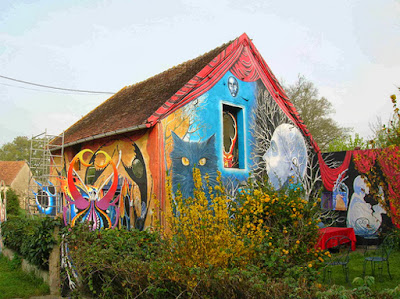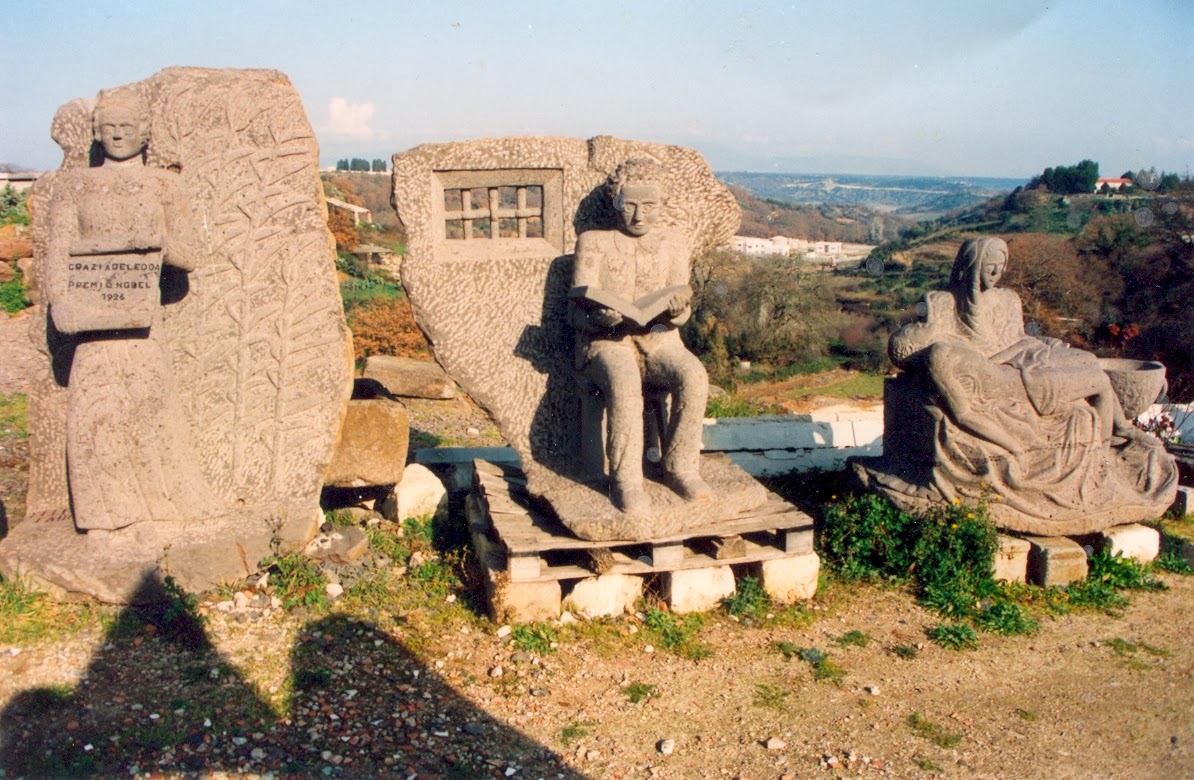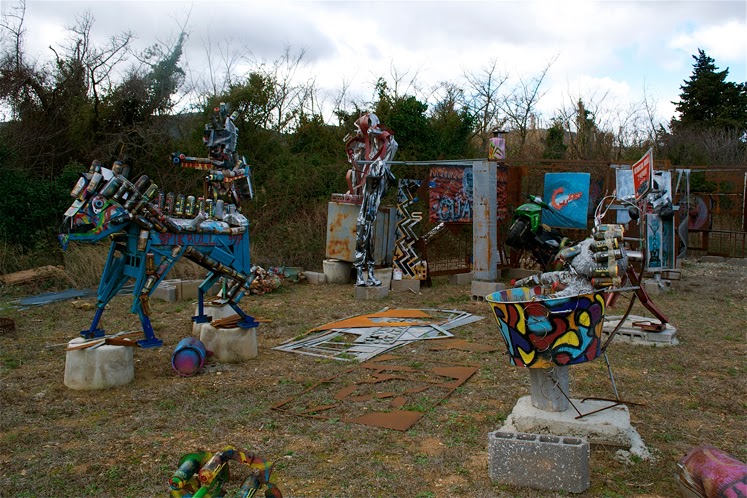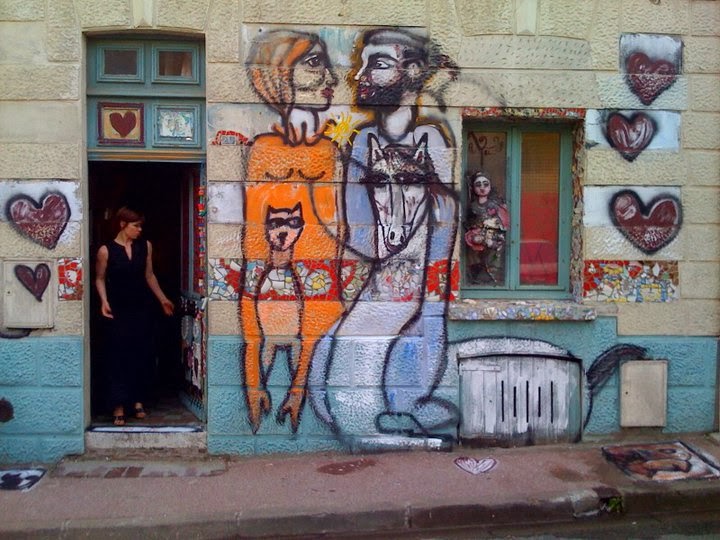
When in the late nineties of the former century I began searching the internet for information about art environments in France, I soon came along an abundantly decorated house, with a picture of a big cat, created by someone named Chop.
On the internet this creative construct mainly got attention from touristic websites, french sources dealing with art brut having no information about this spot (up till now most of these still haven't, btw).
In april 2013 however, Sophie Lepetit wrote about this site in her weblog, referring to an article in a french newspaper, which had some background information. So`with this information I now can present the story.
this picture and the next three courtesy of Yvonne Rieschke
Life and works
Chop was born in 1947 in Paris. His mother being a young unmarried girl, who couldn't care for him, he for some months was left behind with a sloppy family, then was cared for by an aunt, who lived in the Yonne area. This background has made him decide to hide his family name to the public and always use a pseudonym.
As a young boy Chop already was attracted to make paintings, preferably on large surfaces, since already then he thought one should be able to "bathe" in a painting.....
At 18 he went to Paris, earning his living with various small jobs. He also must have stayed some time in Amsterdam, but returned to Paris, to be active as a street painter in the Quartier Latin.
It is not clear whether or not he attended any art classes, in Paris and/or Amsterdam The newspaper article has no information about this, but I suppose he is a self-taught artist.
Anyway, in 1969 Chop left Paris to wander France, but soon, in 1970, he settled in the small cabin in Venas he bought with some friends, but finally had for himself.
In and around this house, where he would stay for the rest of his life, he could fully express himself in his own artistic way. Chop likes the music of Chopin (indeed, the pseudonym is taken from this composer), and his way of doing, as well as the way he has transformed the cabin into an art work, has many baroque characteristics.
Interior and exterior of the cabin have been decorated abundantly in vivid colors, inside everywhere there are candlesticks, Louis XV costumes, bizarre clocks, objects with painted eyes, items that represent the seasons.....
It is understandable that Chop in particular has got publicity through touristic websites, because he soon got fame because of the special tours in and around his house he would offer tourists who visit the region. And then, Chop is also is rather skillful in raising publicity
Chop is beyond this time, an outsider in his own right, who has made a wonderful, very interesting art environment, maybe not to everyone's taste, but since when is that a critrion?
Documentation
* Article in Echo du Berry, november 2008 (in french) (in dutch)
* Article by Yvonne Rieschke on her website Art-en-France (in dutch)
* Weblog of Sophie Lepetit, april 13, 2013
* Video (3'14", Daily Motion, TV France 3 Auvergne, aug 2007) (sorry for the un-skipable introductory commercial)
Chop
Maison "couleur des temps"
Petit-Clémagnet
03190 Venas
guided visits (30 min) in summer daily, except tuesday 15-19










































































.png)

.jpg)
.jpg)
.jpg)



